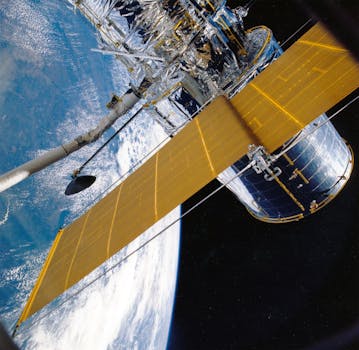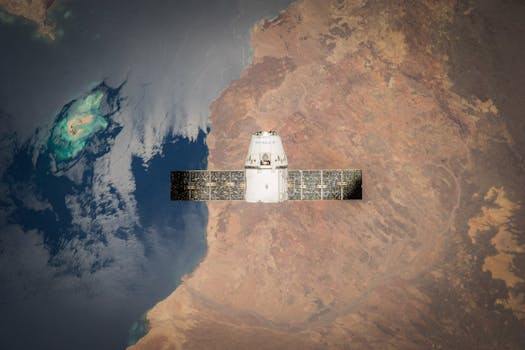
Beyond Earth: How Recent Advances Are Shaping Satellite Telecommunications
Satellite telecommunications, beyond Earth, is undergoing a significant transformation, driven by recent advances in space technology, materials science, and wireless networks. The focus keyword, Satellite Telecommunications, is at the forefront of this revolution, enabling faster, more reliable, and secure connections across the globe. With the increasing demand for global connectivity, satellite telecommunications is playing a vital role in bridging the digital divide, especially in remote and underserved areas.
One of the key drivers of this transformation is the development of new satellite constellations, such as OneWeb and Starlink, which are designed to provide high-speed, low-latency internet connectivity to underserved communities. These constellations are composed of hundreds of small satellites, each equipped with advanced communication payloads, that work together to provide seamless coverage and redundancy. The use of advanced materials, such as graphene and nanomaterials, is also enabling the development of lighter, more efficient, and cost-effective satellites.
Advances in Space Technology

Recent advances in space technology have also enabled the development of more efficient and powerful propulsion systems, such as ion engines and hall effect thrusters. These systems allow satellites to maneuver more efficiently and maintain their position in orbit, reducing the need for costly and complicated station-keeping maneuvers. Additionally, advances in spacecraft design and thermal management have enabled satellites to operate for longer periods, reducing the need for frequent replacement and increasing the overall lifespan of the satellite.
The use of artificial intelligence and machine learning is also becoming more prevalent in satellite telecommunications, enabling real-time monitoring and optimization of satellite performance, as well as the detection and mitigation of potential issues before they become major problems. The integration of Internet of Things (IoT) devices and 5G networks is also enabling new applications and services, such as smart cities and industrial automation, to be supported by satellite telecommunications.
Applications and Services

The applications and services enabled by recent advances in satellite telecommunications are vast and varied. From remote sensing and Earth observation to navigation and communication, satellite telecommunications is playing a critical role in supporting a wide range of industries and activities. The use of satellite telecommunications is also enabling new applications and services, such as disaster response and recovery, search and rescue, and environmental monitoring, to be supported and enhanced.
In addition to these applications and services, recent advances in satellite telecommunications are also enabling the development of new business models and revenue streams, such as satellite-based advertising and data analytics. The use of satellite telecommunications is also enabling new partnerships and collaborations to be formed, between governments, industries, and organizations, to support the development and deployment of satellite telecommunications systems and services.
Challenges and Opportunities

Despite the many advances and opportunities presented by satellite telecommunications, there are also several challenges and risks that need to be addressed. From regulatory frameworks and policy issues to cybersecurity threats and space debris, the satellite telecommunications industry is facing a range of complex and interconnected challenges. The development of new technologies and innovations is also creating new opportunities and risks, such as the potential for job displacement and socioeconomic disruption.
However, with the right strategies and approaches, these challenges and risks can be mitigated and overcome. The development of new regulatory frameworks and policy initiatives can help to support the growth and development of the satellite telecommunications industry, while also addressing the challenges and risks associated with this growth. The use of advanced technologies, such as artificial intelligence and machine learning, can also help to enhance the security and resilience of satellite telecommunications systems and services.
Conclusion

In conclusion, recent advances in satellite telecommunications are transforming the way we communicate beyond Earth’s atmosphere, enabling faster, more reliable, and secure connections across the globe. With the increasing demand for global connectivity, satellite telecommunications is playing a vital role in bridging the digital divide, especially in remote and underserved areas. As the satellite telecommunications industry continues to evolve and grow, it is essential that we address the challenges and risks associated with this growth, while also embracing the many opportunities and benefits that it presents.
See more:







